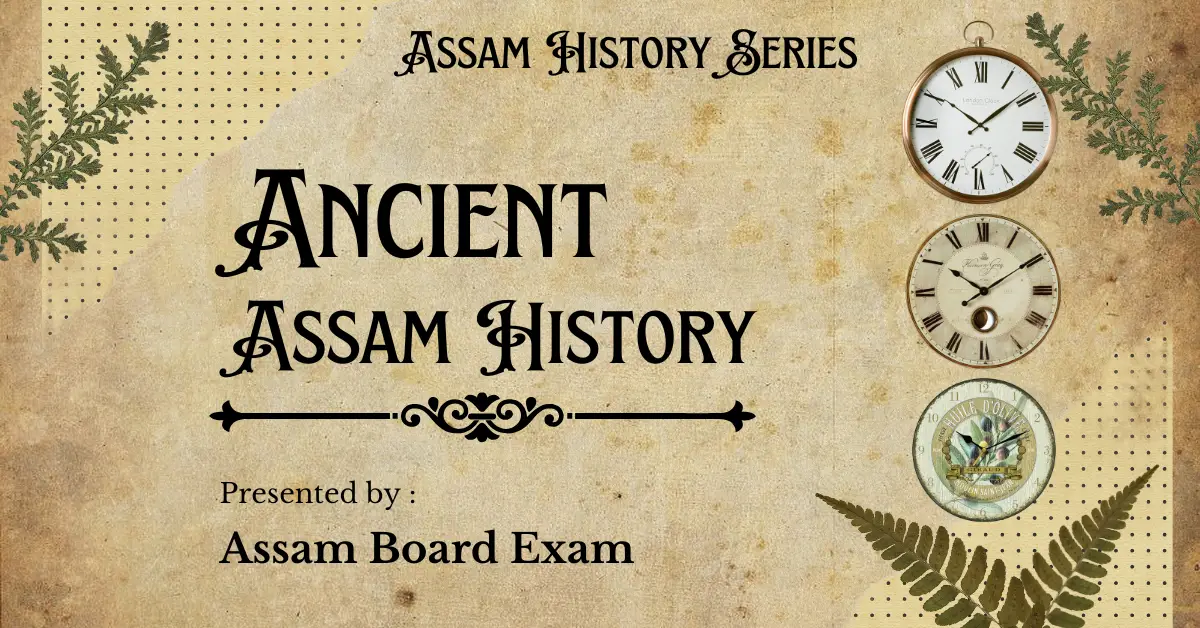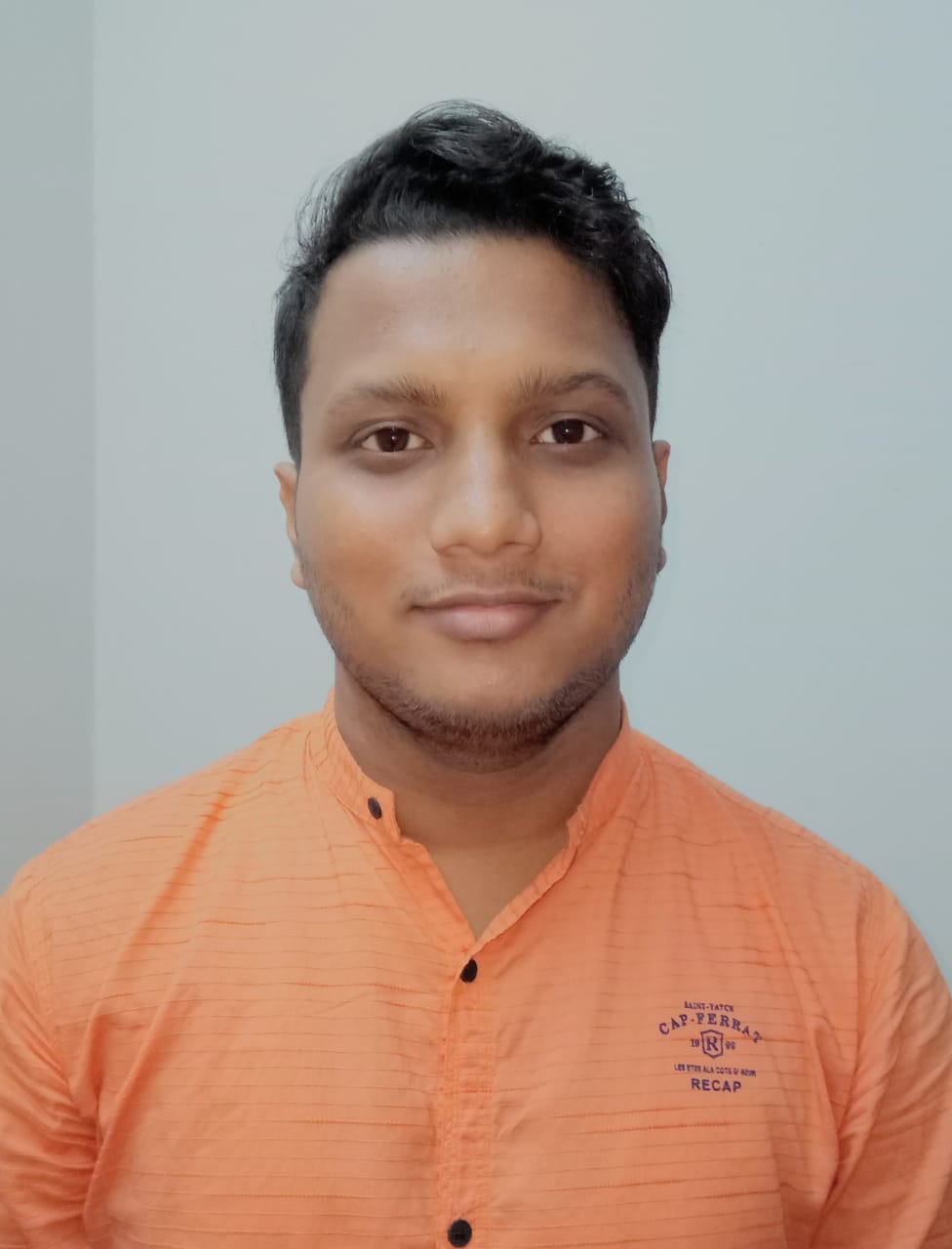Ancient History of Assam: Dynasties, Myths, and Legends
Discover the fascinating history of Assam, a land once known as Pragjyotisha and later as Kamarupa. This region, rich in myths and culture, was ruled by legendary dynasties whose stories merge mythology with historical facts. Learn about the ancient rulers of Assam, including Mahiranga Danava, Narakasura, and Bhagadatta, and their significant contributions to Indian history.
Table of Contents
Ancient Names of Assam
In ancient times, Assam was known as Pragjyotisha and later as Kamarupa. These names have fascinating origins, tied to mythology, culture, and migration.
Origin of the Name Pragjyotisha
- Astrological Connection: According to the Kalika Purana, Brahma made the first star calculations in Pragjyotisha. The word means “City of Eastern Astrology,” combining Prag (eastern) and Jyotisha (astrology).
- Migration Theory: A group from China called Chao-Theius migrated to India and settled in three regions, one being Assam. Their name, Zuhthis, was said to change into Jyotisha in Sanskrit. However, this lacks strong evidence.
Origin of the Name Kamarupa
- Mythological Story: As per the Gopatha Brahmana, Kamadeva, the god of love, was revived in this land after being destroyed by Shiva, giving the region its name.
- Mythical Origin: The name may come from the Austric word Kamru or Kamrut, symbolizing magic and the worship of the goddess Kamakhya.
Origin of the Name Assam
- Geographical Link: The word may come from Asama, meaning “uneven,” referring to the land’s contrast with the plains of Bengal.
- Ahom Connection: It might derive from the Tai-Ahom word Acham, meaning “undefeated” or “conquerors.” This name became associated with the Ahom people and later, the land itself.
- Bodo Influence: It could also come from the Bodo term Ha-chom, meaning “low land.”
The name Assam first appeared after the Ahoms entered the Brahmaputra Valley in the 13th century. It reflects the region’s rich cultural and historical heritage.
The Extent of Pragjyotisha-Kamrupa
- Northern Influence: Portions of Nepal and Bhutan were also under its control, highlighting the kingdom’s extensive reach and importance in ancient history
- Vast Territory: The kingdom of Pragjyotisha-Kamrupa was much larger than modern Assam, with boundaries that shifted over time.
- Western Boundary: Historical texts like the Puranas mention that its western limit extended up to the Karatoya River.
- Southern and Eastern Regions: The kingdom included regions such as Manipur, Jaintiya, Cachar, and parts of present-day Bangladesh, like Sylhet, Mymensingh, and Rangpur.
Dynasties of Ancient Assam
Mahiranga Danava: The First King of Assam
- Who Was He?
- Mahiranga Danava was a Kirata chief and the first known ruler of Assam.
- His capital was Mairanka, near present-day Guwahati.
- Succession:
- He was succeeded by:
- Hataka Asura
- Sambara Asura
- Ratna Asura
- Ghataka Asura
- He was succeeded by:
- End of Danava Rule:
- The last ruler, Ghataka Asura, was defeated by Narakasura, who established the Asura Dynasty.
Narakasura: The Asura King
- Origins:
- Son of Mother Earth (Prithvi) and Vishnu’s boar incarnation.
- Known as Bhauma (born of earth).
- Achievements:
- Established the first Aryan settlement in Pragjyotisha.
- Built a temple for Goddess Kamakhya on Nilachala Hill.
- Excavated a tank and constructed a road to the temple in one night.
- Downfall:
- Became tyrannical and tried to forcefully marry Goddess Kamakhya.
- Killed by Lord Krishna, who placed his son Bhagadatta on the throne.
Bhagadatta: The Warrior King
- Role in the Mahabharata:
- Bhagadatta, son of Narakasura, fought for the Kauravas in the Kurukshetra War.
- Married his daughter Bhanumati to Duryodhana.
- As a gift for his daughter, Bhagadatta is credited with excavating the Dighali Pukhuri, a famous lake in Assam, to make her wedding memorable.
- Titles and Achievements:
- Known as:
- “The mighty king of the Mlechchhas”
- “Not inferior to Chakra (Indra) in battle”
- “Best wielder of the elephant squad.”
- Commanded the Kalinga army during the Mahabharata war.
- Known as:
- Other Names:
- Called Sailalaya (mountain dweller), Parvatapati (lord of the mountains), and Purvasagaravasi (eastern sea dweller) in the Mahabharata.
- Death in Battle:
- Killed by Arjuna in the Kurukshetra war.
Bhismaka: The Vidarbha King
- Kingdom and Capital:
- Ruler of Vidarbha, identified with modern Sadiya in Assam.
- His capital was Kundina, situated on the banks of the Kundil River.
- The Rukmini-Krishna Story:
- Bhismaka’s daughter Rukmini desired to marry Lord Krishna, but Bhismaka arranged her marriage to Sisupala.
- On the wedding day, Krishna eloped with Rukmini, defeating Sisupala.
- This tale is immortalized in the Bhagavata Purana and Rukmini-Harana by Sankardeva.
- Legacy:
- The Chutia, who came to power in the 12th century, trace their lineage back to Bhismaka.
Banasura: The Powerful Asura King
- Kingdom and Capital:
- His kingdom extended from Lakhimpur to North Bengal.
- His capital was Sonitpur, near modern Tezpur.
- Cultural Contributions:
- Built the Mahabhairab Temple in Tezpur.
- The Agnigarh Hill is associated with the legend of his daughter Usha.
- Usha-Aniruddha Marriage:
- Usha, Banasura’s daughter, secretly married Aniruddha, Krishna’s grandson, with the help of her friend Chitralekha.
- This story is beautifully narrated in the Kumara Harana by Sankardeva..
- Legacy:
- His grandson Bhaluk established a capital at Bhalukpong, near Balipara.
- The Aka tribe claims descent from Bhaluk.
Conclusion
Assam’s ancient history is a blend of myth and reality, highlighting its significance in Indian culture. From the Danava kings to the Asura rulers like Narakasura and Banasura, and warrior kings like Bhagadatta and Bhismaka, each era contributed to Assam’s rich heritage. The tales of these legendary figures continue to resonate, making Assam a land of profound historical and mythological importance.
Summary of Ancient Assam History
- Names of Assam
- Pragjyotisha: Means “City of Eastern Astrology,” as per Kalika Purana.
- Kamarupa: Associated with the worship of Goddess Kamakhya and the revival of Kamadeva.
- Assam: Derived from “Asama” (uneven) or Tai word “Acham” (undefeated); popularized during the Ahom Dynasty.
- Extent of Pragjyotisha-Kamarupa
- Stretched from the Karatoya River in the west to include parts of Nepal, Bhutan, Manipur, Jaintiya, Cachar, and Sylhet.
- Mahiranga Danava
- The first known king of Assam, a Kirata chief.
- Capital: Mairanka, near modern Guwahati.
- Succeeded by Hatakasura, Sambarasura, Ratnasura, and Ghatakasura.
- Ghatakasura was defeated by Narakasura, ending the Danava rule.
- Narakasura
- Son of Mother Earth (Prithvi) and Vishnu’s boar incarnation.
- Established the first Aryan settlement in Pragjyotisha.
- Built the Kamakhya Temple on Nilachala Hill.
- Killed by Lord Krishna, who placed his son Bhagadatta on the throne.
- Bhagadatta
- Fought for the Kauravas in the Mahabharata war.
- Titles:
- “Mighty king of the Mlechchhas”.
- “Best wielder of the elephant squad”.
- Killed by Arjuna during the war.
- Bhismaka
- Ruler of Vidarbha, identified with modern Sadiya in Assam.
- Daughter Rukmini was married to Krishna after he eloped with her.
- Ancestor of the Chutiya dynasty.
- Banasura
- Contemporary of Narakasura; ruled from Sonitpur (modern Tezpur).
- Built the Mahabhairab Temple and Agnigarh Hill.
- Daughter Usha married Aniruddha, Krishna’s grandson.
- Defeated by Krishna in a legendary battle.
- His grandson Bhaluk established a capital at Bhalukpong.
- Cultural Significance
- Assam’s history blends mythology and reality, reflected in epics like the Mahabharata and texts like the Puranas.
- Contributions from rulers like Bhismaka and Banasura enriched its heritage and folklore.
FAQs about Ancient Assam History
Q1: What was ancient Assam called?
Ancient Assam was known as Pragjyotisha and later as Kamarupa.
Q2: Who was the first ruler of Assam?
The earliest known ruler was Mahiranga Danava, a Kirata chief.
Q3: Who built the Kamakhya Temple?
The Kamakhya Temple on Nilachala Hill was built by Narakasura, a legendary ruler of Pragjyotisha.
Q4: What is the significance of Bhagadatta in Assam’s history?
Bhagadatta, the son of Narakasura, was a powerful warrior who fought in the Mahabharata war on the side of the Kauravas.
Q5: Who was Bhismaka, and what was his contribution?
Bhismaka was a king of Vidarbha, identified with modern Sadiya in Assam. His daughter, Rukmini, married Lord Krishna, and his lineage led to the rise of the Chutiya dynasty.
Q6: What is the story of Banasura?
Banasura, a contemporary of Narakasura, ruled from Sonitpur (modern Tezpur). He is known for the tale of his daughter Usha and her marriage to Aniruddha, Krishna’s grandson.
Q7: What was the extent of the ancient Kamarupa kingdom?
The Kamarupa kingdom extended beyond modern Assam, including parts of Nepal, Bhutan, Manipur, Jaintiya, Cachar, and Sylhet, reaching up to the Karatoya River in the west.
Follow Us
Stay connected and updated with our latest offerings by following us on Youtube



